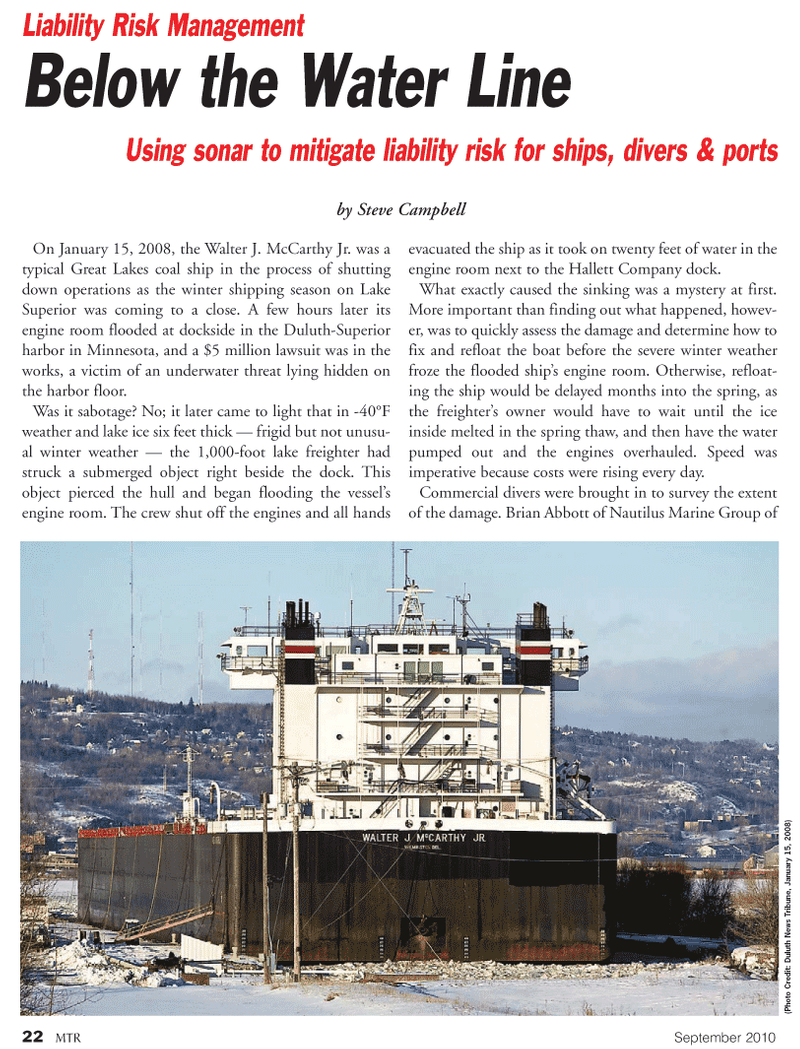
Page 22: of Marine Technology Magazine (September 2010)
Ocean Observation
Read this page in Pdf, Flash or Html5 edition of September 2010 Marine Technology Magazine
22 MTR September 2010
On January 15, 2008, the Walter J. McCarthy Jr. was a typical Great Lakes coal ship in the process of shutting down operations as the winter shipping season on Lake
Superior was coming to a close. A few hours later its engine room flooded at dockside in the Duluth-Superior harbor in Minnesota, and a $5 million lawsuit was in the works, a victim of an underwater threat lying hidden on the harbor floor.
Was it sabotage? No; it later came to light that in -40°F weather and lake ice six feet thick — frigid but not unusu- al winter weather — the 1,000-foot lake freighter had struck a submerged object right beside the dock. This object pierced the hull and began flooding the vessel’s engine room. The crew shut off the engines and all hands evacuated the ship as it took on twenty feet of water in the engine room next to the Hallett Company dock.
What exactly caused the sinking was a mystery at first.
More important than finding out what happened, howev- er, was to quickly assess the damage and determine how to fix and refloat the boat before the severe winter weather froze the flooded ship’s engine room. Otherwise, refloat- ing the ship would be delayed months into the spring, as the freighter’s owner would have to wait until the ice inside melted in the spring thaw, and then have the water pumped out and the engines overhauled. Speed was imperative because costs were rising every day.
Commercial divers were brought in to survey the extent of the damage. Brian Abbott of Nautilus Marine Group of
Liability Risk Management
Below the Water Line
Using sonar to mitigate liability risk for ships, divers & ports by Steve Campbell (Photo Cr edit: Duluth News T r ibune, January 15, 2008)

 21
21

 23
23
